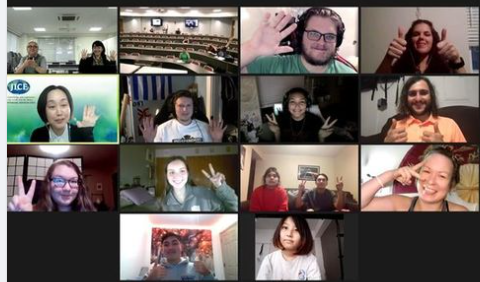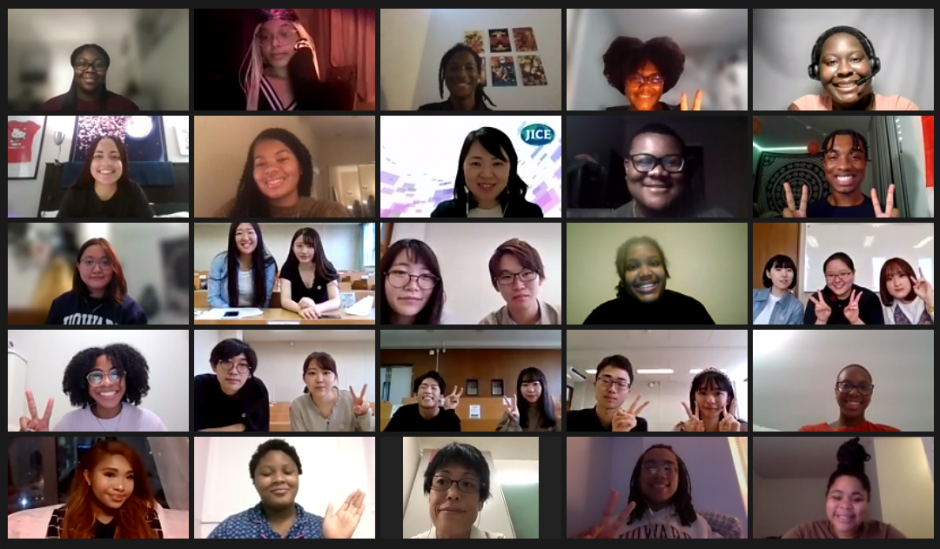TOMODACHI KAKEHASHI Inouye Scholars Program: Students in the U.S. and Japan Interact Virtually
Two American universities were selected to participate in this year’s TOMODACHI KAKEHASHI Inouye Scholars Program in September 2021. Each university was paired with a Japanese university in order to facilitate the exchange program. Howard University in Washington D.C. was paired with Keiwa College in Niigata Prefecture. Oklahoma’s Northeastern University was also paired with Hokkaido University as a part of this year’s program.
Twenty-eight students from Northeastern University were divided into groups according to the topics they were interested in sharing as part of the virtual cultural exchange. They prepared and recorded presentations on a variety of topics relevant to indigenous cultures including language, storytelling, art, tribal attire, and traditional medicine and cuisine. On September 7, the students sat in a virtual lecture delivered by professors from Hokkaido University where they learned more about the Ainu people and their history. Students were able to identify similarities in the history and struggles of the Ainu with the indigenous populations they were familiar with.
Christian Rangel from Northeastern University commented, “I learned a lot about the Ainu culture and about the indigenous people in Japan, my greatest takeaway is that us as Native people living in the United States are not so different from the Ainu people who have had to go through years of forced assimilation, oppression, and discrimination which rings such a sad similar tone to what has happened to my people.”

On September 1, Howard University and Keiwa College had a virtual pre-exchange presentation, during which students from both universities took turns introducing their schools and presenting on their topics of choice. Keiwa College participants presented on rice, since the school is in Niigata Prefecture, one of the biggest rice producers in Japan. Howard University’s topic was Washington, D.C., during which they presented briefly on the history of the capitol as well as the significance of their school. Following the group presentation, students were divided into small groups where they discussed pop culture and sustainable development goals. Students had the opportunity to ask each other questions in order to get to know one another. Participants from both schools organized a second meeting on November 5 in order to give each other the opportunity to build on this initial meeting and get to know one another better.
Reflecting on their first virtual exchange, Judy Dismuke from Howard University commented, “The first meeting was amazing! I enjoyed it because I had never gotten to directly interact with a group of Japanese students before. Having that experience encouraged me to help set up the second meeting we had.”



